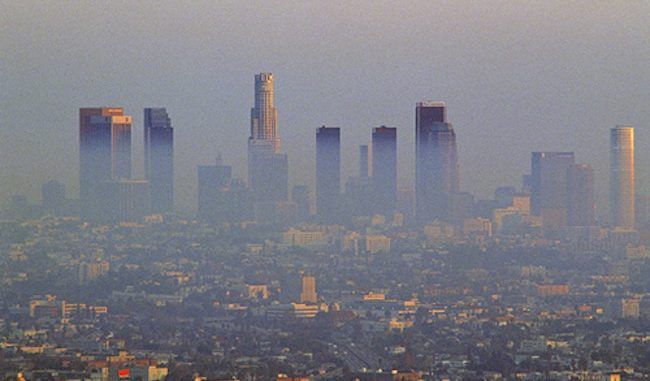
An ‘invisible tsunami’ of methane gas has been pouring out from a broken well in Los Angeles, causing thousands to become ill as people’s lives and business’ have been turned upside down for over three months, as residents wait for the gas company to take action once and for all.
Huffingtonpost.com reports:
The rotten-smelling air in and around the Porter Ranch community will begin to clear when the well is permanently sealed. And Southern California Gas Company, which operates the Aliso Canyon gas storage facility where the leak originated, says it expects to have the leak stopped this month. But the effect that the natural gas’s main component — methane — has had on the atmosphere doesn’t simply vanish when the well ceases operation.

BYPASS THE CENSORS
Sign up to get unfiltered news delivered straight to your inbox.
You can unsubscribe any time. By subscribing you agree to our Terms of Use
The well has released more than 91,000 metric tons of methane gas into the air, according to Environmental Defense Fund, but the exact toll it has taken on the environment isn’t immediately clear. In part, that’s because the gas can only be seen with a special infrared camera, making this an invisible catastrophe in California — there are no oil slicks in the clouds above Los Angeles, no wildlife covered in crude. But make no mistake: The volume of methane that has been ejected into the air is massive, and its effect on global warming is real.
Methane is a potent greenhouse gas — it’s an even stronger heat-trapping gas than carbon dioxide. To determine the equivalent emissions from various other sources to help illustrate the scope of the disaster over a 20-year time scale, The Huffington Post drew on the help of Briana Mordick, a geologist and senior scientist with the National Resources Defense Council, as well as this handy Environmental Protection Agency greenhouse gas calculator.
HuffPost chose to use the 20-year time scale rather than a 100-year scale because, as the Intergovernmental Panel on Climate Change recently noted, there is no scientific argument for selecting the 100-year scale over the 20-year one; rather, it’s a value judgement. And since climate change appears much worse than we thought, there’s no better time than the present to assess the leak’s impact.

What does an extra 1.6 million cars on the road look like? That’s about as many people who live in Philadelphia, all behind the wheel for a year.
And it would take an average 3.6 million Americans — roughly the number of people living in L.A. — dumping waste in landfills for an entire year to total the Aliso Canyon gas leak’s global warming potential.
If the cloud of methane were visible, we could see it standing about as tall as China’s Shanghai Tower, the second tallest building in the world, with a circumference three times that wide.
While this gas blowout has prompted comparisons to BP’s oil well failure in the Gulf of Mexico in 2010 and the Exxon Valdez oil spill in Alaska in 1989, experts say this leak will have further-reaching environmental consequences.
“As tragic as that was for ocean life, those were a tiny blip for greenhouse gases that made it to the atmosphere,” Rob Jackson, an environmental scientist at Stanford University, told HuffPost last month. While the BP disaster will likely be remembered as the bigger economic disaster, he said, the Aliso Canyon leak will have more climate change consequences.
“It’s really a massive leak,” he said.


I enjoyed it just as much as you will be able to accomplish here. You should be apprehensive about providing the following, but the sketch is lovely and the writing is stylish; yet, you should definitely return back as you will be doing this walk so frequently.